- Sorry, this product is unavailable.
-
 Erich von Daniken undertakes to prove that in prehistoric and early historic times the Earth was visited by unknown beings from the Cosmos; that these extra-terrestrials created human intelligence by a deliberate genetic mutation; that the extra-terrestrials ennobled hominids 'in their own image'; that these visitors to Earth were recorded and handed down in various religions, mythologies and popular legends; and that in some places, the extra-terrestrials left physical evidence of their presence on Earth. He draws his evidence from all over the world: from the Turkish mountains where carved monoliths and giant stone heads mysteriously survive the centuries; to the secret caves of Ecuador, where treasured remnants of a bygone era remain hidden; to equatorial Africa, where the 'primitive' Dogon have been familiar for centuries with the complex movements of Sirius, a star only discovered by western astronomers since the invention of the radio telescope. He searches the ancient documents of the Hindus, the Jews and the Christians; examines religions, mythologies and legends and fins a recurring theme of 'human' gods, heavenly chariots, 'space suits', floods and disasters. The evidence is largely circumstantial - but he challenges all comers to produce an interpretation that better fits the facts. Illustrated with black and white photographs.
Erich von Daniken undertakes to prove that in prehistoric and early historic times the Earth was visited by unknown beings from the Cosmos; that these extra-terrestrials created human intelligence by a deliberate genetic mutation; that the extra-terrestrials ennobled hominids 'in their own image'; that these visitors to Earth were recorded and handed down in various religions, mythologies and popular legends; and that in some places, the extra-terrestrials left physical evidence of their presence on Earth. He draws his evidence from all over the world: from the Turkish mountains where carved monoliths and giant stone heads mysteriously survive the centuries; to the secret caves of Ecuador, where treasured remnants of a bygone era remain hidden; to equatorial Africa, where the 'primitive' Dogon have been familiar for centuries with the complex movements of Sirius, a star only discovered by western astronomers since the invention of the radio telescope. He searches the ancient documents of the Hindus, the Jews and the Christians; examines religions, mythologies and legends and fins a recurring theme of 'human' gods, heavenly chariots, 'space suits', floods and disasters. The evidence is largely circumstantial - but he challenges all comers to produce an interpretation that better fits the facts. Illustrated with black and white photographs. -

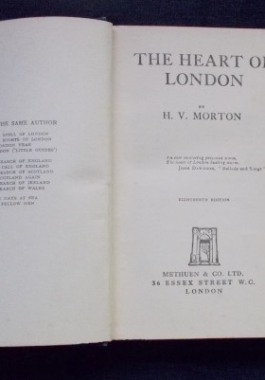 A collection of some of H.V. Morton's columns for the Daily Express, which is still in print today almost 100 years later. Morton never did the tourist route; instead he went off the beaten track to look into what really made a city. What he found was London's wonderful diversity of people against intriguing backgrounds. Among other places, he visits the docks, the Caledonian Market, Petticoat Lane, the Free Cancer Hospital, observes the nannies and their charges in Kensington Gardens, tea-shops, St. Martin's-in-the-Fields, the Lost Property Office and many other places.
A collection of some of H.V. Morton's columns for the Daily Express, which is still in print today almost 100 years later. Morton never did the tourist route; instead he went off the beaten track to look into what really made a city. What he found was London's wonderful diversity of people against intriguing backgrounds. Among other places, he visits the docks, the Caledonian Market, Petticoat Lane, the Free Cancer Hospital, observes the nannies and their charges in Kensington Gardens, tea-shops, St. Martin's-in-the-Fields, the Lost Property Office and many other places. -
 For years they thought it was just them - irritated and tormented by everything around them, from call centres to nose studs, from speed bumps to ringtones. Then along came the television series Grumpy Old Men and they knew they were not alone. It turns out that 35-54 year old men are the grumpiest lot in history. Grumpier than their parents, who were just glad to have survived the war and lived long enough to collect their pensions. Grumpier than their children, who don't care about anything except iPods and tattoos. This book extends the hand of friendship to the young, the old and the women who identified with Grumpy Old Men. It is now a modern movement and its members are proud of the title. Sir Bob Geldof: If you aren't grumpy, that means you're contented with the world. And who the **** could be that? Featuring Rick Stein, Jeremy Clarkson, Arfur Smith, Rick Wakeman and more.
For years they thought it was just them - irritated and tormented by everything around them, from call centres to nose studs, from speed bumps to ringtones. Then along came the television series Grumpy Old Men and they knew they were not alone. It turns out that 35-54 year old men are the grumpiest lot in history. Grumpier than their parents, who were just glad to have survived the war and lived long enough to collect their pensions. Grumpier than their children, who don't care about anything except iPods and tattoos. This book extends the hand of friendship to the young, the old and the women who identified with Grumpy Old Men. It is now a modern movement and its members are proud of the title. Sir Bob Geldof: If you aren't grumpy, that means you're contented with the world. And who the **** could be that? Featuring Rick Stein, Jeremy Clarkson, Arfur Smith, Rick Wakeman and more. -
 This book, which has nothing to do with anything, owes nothing to almost everyone including Robert Burns, Napoleon, Graeme Green, Livingstone Hopkins, Longfellow, John Bull, Guiseppe Verdi, Daniel Defoe, Lord Byron and others. It owes a lot to Bill Wannan, who over the years has pandered to his sudden rushes of comic inspiration and has strayed into a world of dreadful puns, comic narrative, biographies brief and banal, philosophical snatches and illustrated idiocy. His assiduous filing has allowed the accumulation of these visual and verbal tid-bits for the delectation of mankind. So if you want to knit a scarf for a giraffe, see Mr. Hyde's last confession, understand the difference between a ballad and a ballade, read of the historic meeting between William Wordsworth and the Inspector of Stamps, find out who was the world's most eligible vandal - then this book is for you. Illustrated.
This book, which has nothing to do with anything, owes nothing to almost everyone including Robert Burns, Napoleon, Graeme Green, Livingstone Hopkins, Longfellow, John Bull, Guiseppe Verdi, Daniel Defoe, Lord Byron and others. It owes a lot to Bill Wannan, who over the years has pandered to his sudden rushes of comic inspiration and has strayed into a world of dreadful puns, comic narrative, biographies brief and banal, philosophical snatches and illustrated idiocy. His assiduous filing has allowed the accumulation of these visual and verbal tid-bits for the delectation of mankind. So if you want to knit a scarf for a giraffe, see Mr. Hyde's last confession, understand the difference between a ballad and a ballade, read of the historic meeting between William Wordsworth and the Inspector of Stamps, find out who was the world's most eligible vandal - then this book is for you. Illustrated. -
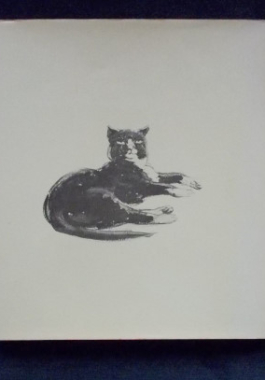
 Norman Lindsay kept a small warm corner of his long artistic life for his cats. He not only collected them and kept a horde of them in the stables and sheds, the gardens, bush and architectural nooks of Springwood - allowing the occasional prince to share the master's studio - but he drew them with humour and delightful observation. While The Magic Pudding made Lindsay's kookaburras famous, this other small anabranch of his art meandered own without public scrutiny amid the controversy, furor and celebration of his paintings and pen drawings. Some of the collection presented here were done with quick delight over the behaviour of one of his Springwood friends, others were drawn as cartoons for The Lone Hand or The Bulletin and others were done as Christmas cards or jokes. They all express the pleasure and delight his feline friends gave him. His long time friend, poet and author Douglas Stewart, introduces the drawings with an affectionate memoir of Lindsay and his cats.
Norman Lindsay kept a small warm corner of his long artistic life for his cats. He not only collected them and kept a horde of them in the stables and sheds, the gardens, bush and architectural nooks of Springwood - allowing the occasional prince to share the master's studio - but he drew them with humour and delightful observation. While The Magic Pudding made Lindsay's kookaburras famous, this other small anabranch of his art meandered own without public scrutiny amid the controversy, furor and celebration of his paintings and pen drawings. Some of the collection presented here were done with quick delight over the behaviour of one of his Springwood friends, others were drawn as cartoons for The Lone Hand or The Bulletin and others were done as Christmas cards or jokes. They all express the pleasure and delight his feline friends gave him. His long time friend, poet and author Douglas Stewart, introduces the drawings with an affectionate memoir of Lindsay and his cats. -
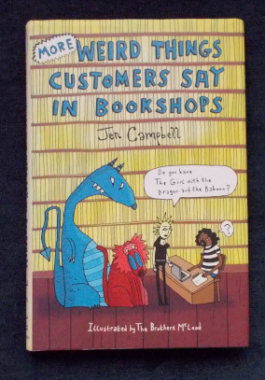 From 'Did Harry Potter kill Hitler' to 'Can we play cricket in your bookshop?', here's a bewildering, slightly alarming and definitely hilarious selection of the most ridiculous conversations from the shop floor! And these gems and gold nuggets have been supplied from booksellers across the world...and truly, they border on the realms of fantasy. Notable weird things include a request for a book on the workings of an internal combustion engine suitable for a three-year-old, the lost ferret and speculation that The Hungry Caterpillar was possibly bulimic...honestly, no-one could invite this stuff....
From 'Did Harry Potter kill Hitler' to 'Can we play cricket in your bookshop?', here's a bewildering, slightly alarming and definitely hilarious selection of the most ridiculous conversations from the shop floor! And these gems and gold nuggets have been supplied from booksellers across the world...and truly, they border on the realms of fantasy. Notable weird things include a request for a book on the workings of an internal combustion engine suitable for a three-year-old, the lost ferret and speculation that The Hungry Caterpillar was possibly bulimic...honestly, no-one could invite this stuff.... -

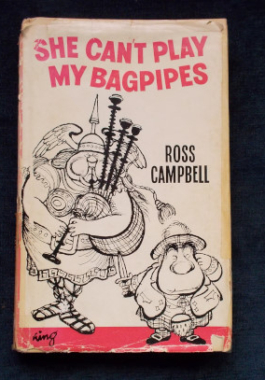 Ross was regarded as one of Australia's greatest humorists, writing about a great Australian institution - the suburban family - and his tales of family life in the burbs at Oxalis Cottage were an instant hit in Australia's Daily Telegraph. This collection of columns include such philosophical questions as: should mistresses go out to work? Are koalas vicious? Why do good looking authors write bad books? Do wine connoisseurs get drunk? These posers, and more, are covered in Campbell's hilarious low-falutin' , soft-bitten Aussie style.
Ross was regarded as one of Australia's greatest humorists, writing about a great Australian institution - the suburban family - and his tales of family life in the burbs at Oxalis Cottage were an instant hit in Australia's Daily Telegraph. This collection of columns include such philosophical questions as: should mistresses go out to work? Are koalas vicious? Why do good looking authors write bad books? Do wine connoisseurs get drunk? These posers, and more, are covered in Campbell's hilarious low-falutin' , soft-bitten Aussie style. -
 The mystery of the Man behind the Iron Mask has intrigued people for over 250 years, inspiring as much fantasy as serious conjecture. This is the story of the story, so to speak; an account of the theories and counter-theories, from the claim that he was the twin brother of Louis XIV to the recognition that he was Eustache Dauger, with diversion by way of such candidates as the Duke of Monmouth, Richard Cromwell, Molière, Nicholas Fouquet, an Armenian archbishop, an Italian astrologer and many more. Complete and comprehensive, this is a presentation of all the known facts of the prisoner's existence chronologically, as they have been discovered, together with all the myths as they have flourished from the preposterous stories put about by his gaoler in 1669 to the alleged discovery of his skeleton in a tower in Cannes in 1977. As the various stories are revealed, the reader may accept or reject the assorted evidence and develop his own views before the author presents his own conclusions. Illustrated.
The mystery of the Man behind the Iron Mask has intrigued people for over 250 years, inspiring as much fantasy as serious conjecture. This is the story of the story, so to speak; an account of the theories and counter-theories, from the claim that he was the twin brother of Louis XIV to the recognition that he was Eustache Dauger, with diversion by way of such candidates as the Duke of Monmouth, Richard Cromwell, Molière, Nicholas Fouquet, an Armenian archbishop, an Italian astrologer and many more. Complete and comprehensive, this is a presentation of all the known facts of the prisoner's existence chronologically, as they have been discovered, together with all the myths as they have flourished from the preposterous stories put about by his gaoler in 1669 to the alleged discovery of his skeleton in a tower in Cannes in 1977. As the various stories are revealed, the reader may accept or reject the assorted evidence and develop his own views before the author presents his own conclusions. Illustrated. -
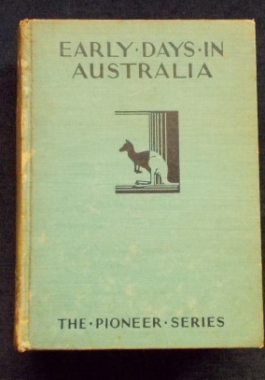 A collection of writings by various authors detailing the search for the Great Southland Terra Australis dating from accounts as far back as the 1400s. In this volume: The Early Voyagers, William Howitt; The Voyage Of Luis De Torres, R.H. Major; The Voyage of Francis Pelsart, John Pinkerton; The Voyage of Tasman, from Dr Lardner's Cabinet Cyclopædia; The Wreck Of The Vergulde Draeck, R.H. Major; In Search Of A Wreck, Matthew Flinders; Dampier And The Buccaneers, Samuel Bennett; First Voyage Of Captain Cook, Roderick Flanagan; The Voyage Of Captain Marion, Matthew Flinders; The Voyage Of Captain Furneaux, Reverend J.E.T. Woods; La Perouse, And The Voyages In Quest Of Him, William Howitt; The Voyages Of Bass And Flinders, from Dr Lardner's Cabinet Cyclopædia; Founding A Country, Roderick Flanagan; Troubles With The Natives, Samuel Bennett; Captain John Hunter In New South Wales, Samuel Bennett; John Batman And The Settlement Of Port Phillip, from Batman's Journal; The Story Of William Buckley, William Westgarth; An Emigrant's Adventures, Anonymous; In The Goldfields, Kinahan Cornwallis.
A collection of writings by various authors detailing the search for the Great Southland Terra Australis dating from accounts as far back as the 1400s. In this volume: The Early Voyagers, William Howitt; The Voyage Of Luis De Torres, R.H. Major; The Voyage of Francis Pelsart, John Pinkerton; The Voyage of Tasman, from Dr Lardner's Cabinet Cyclopædia; The Wreck Of The Vergulde Draeck, R.H. Major; In Search Of A Wreck, Matthew Flinders; Dampier And The Buccaneers, Samuel Bennett; First Voyage Of Captain Cook, Roderick Flanagan; The Voyage Of Captain Marion, Matthew Flinders; The Voyage Of Captain Furneaux, Reverend J.E.T. Woods; La Perouse, And The Voyages In Quest Of Him, William Howitt; The Voyages Of Bass And Flinders, from Dr Lardner's Cabinet Cyclopædia; Founding A Country, Roderick Flanagan; Troubles With The Natives, Samuel Bennett; Captain John Hunter In New South Wales, Samuel Bennett; John Batman And The Settlement Of Port Phillip, from Batman's Journal; The Story Of William Buckley, William Westgarth; An Emigrant's Adventures, Anonymous; In The Goldfields, Kinahan Cornwallis.


